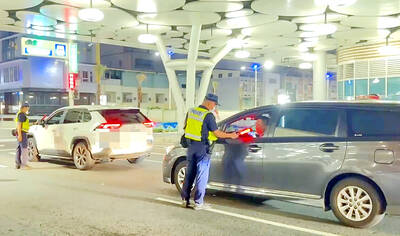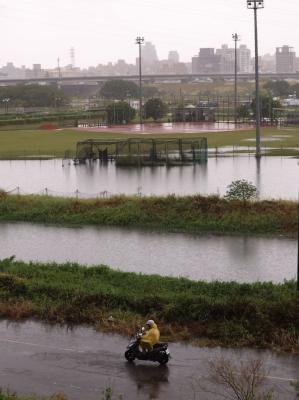The hourly pay of male workers in Taiwan last year averaged NT$361, while that of female workers was NT$304, a gap of 15.8 percent, the Ministry of Labor said on Tuesday as it announced Feb. 27 as equal pay day.
The wage difference means that women in Taiwan must work 58 days more to catch up with men in terms of annual earnings, the ministry said, citing data from the Directorate-General of Budget, Accounting and Statistics.
That is why equal pay day would be marked on Feb. 27, because it is the 58th day of the year, the ministry added.
The gap between men’s and women’s hourly wages fell from 14.9 percent in 2019 to 14.8 percent in 2020, before jumping to 15.8 percent last year, it said.
The ministry attributed the rise to a larger hourly pay increase of 4.6 percent received by men last year, compared with 3.3 percent given to women.
Over the past decade, women have received higher average annual pay hikes than men, except for last year, said Jasmine Mei (梅家瑗), head of the ministry’s Department of Statistics.
In the hospitality and restaurant sector, where women make up 56.3 percent of the workforce, employees received a 1.2 percent increase in hourly pay on average, due to a nationwide level 3 COVID-19 alert implemented last year, while in the male-dominated manufacturing sector, employees received a 5.5 percent rise in hourly pay thanks to booming foreign trade, Mei said.
The gender pay gap in the manufacturing sector also widened, as women employed in the electronics manufacturing industry received an hourly pay hike of 6.7 percent last year, lower than the 13.2 percent given to their male counterparts, she added.
However, the gender pay gap in Taiwan is still smaller than in several other countries.
Japan last year had a gender wage gap of 30.7 percent, South Korea’s was 30.4 percent and the US’ 16.9 percent, ministry data showed.

TRAFFIC SAFETY RULES: A positive result in a drug test would result in a two-year license suspension for the driver and vehicle, and a fine of up to NT$180,000 The Ministry of Transportation and Communications is to authorize police to conduct roadside saliva tests by the end of the year to deter people from driving while under the influence of narcotics, it said yesterday. The ministry last month unveiled a draft of amended regulations governing traffic safety rules and penalties, which included provisions empowering police to conduct mandatory saliva tests on drivers. While currently rules authorize police to use oral fluid testing kits for signs of drug use, they do not establish penalties for noncompliance or operating procedures for officers to follow, the ministry said. The proposed changes to the regulations require

Taipei, New Taipei City, Keelung and Taoyuan would issue a decision at 8pm on whether to cancel work and school tomorrow due to forecasted heavy rain, Keelung Mayor Hsieh Kuo-liang (謝國樑) said today. Hsieh told reporters that absent some pressing reason, the four northern cities would announce the decision jointly at 8pm. Keelung is expected to receive between 300mm and 490mm of rain in the period from 2pm today through 2pm tomorrow, Central Weather Administration data showed. Keelung City Government regulations stipulate that school and work can be canceled if rain totals in mountainous or low-elevation areas are forecast to exceed 350mm in

1.4nm WAFERS: While TSMC is gearing up to expand its overseas production, it would also continue to invest in Taiwan, company chairman and CEO C.C. Wei said Taiwan Semiconductor Manufacturing Co (TSMC) has applied for permission to construct a new plant in the Central Taiwan Science Park (中部科學園區), which it would use for the production of new high-speed wafers, the National Science and Technology Council said yesterday. The council, which supervises three major science parks in Taiwan, confirmed that the Central Taiwan Science Park Bureau had received an application on Friday from TSMC, the world’s largest contract chipmaker, to commence work on the new A14 fab. A14 technology, a 1.4 nanometer (nm) process, is designed to drive artificial intelligence transformation by enabling faster computing and greater power

China Airlines Ltd (CAL) yesterday morning joined SkyTeam’s Aviation Challenge for the fourth time, operating a demonstration flight for “net zero carbon emissions” from Taiwan Taoyuan International Airport to Bangkok. The flight used sustainable aviation fuel (SAF) at a ratio of up to 40 percent, the highest proportion CAL has achieved to date, the nation’s largest carrier said. Since April, SAF has become available to Taiwanese international carriers at Taipei International Airport (Songshan airport), Kaohsiung International Airport and Taoyuan airport. In previous challenges, CAL operated “net zero carbon emission flights” to Singapore and Japan. At a ceremony at Taoyuan airport, China Airlines chief sustainability